Saint Paul, MN Pollen and Allergy Report for Summer 2023
Pollen Allergy Trends in Saint Paul, MN
When is pollen lowest in Saint Paul, MN?

February
Lowest month total PPM
Avg. PPM
When is pollen highest in Saint Paul, MN?

April
Highest month total PPM
Avg. PPM
How does pollen in Saint Paul, MN compare to Minnesota?
Saint Paul has a higher average PPM than the state of Minnesota.
Saint Paul yearly avg PPM:
Minnesota yearly avg PPM:
How does pollen in Saint Paul, MN compare to the USA?
Saint Paul has a higher average PPM than the USA.
Saint Paul yearly avg PPM:
USA yearly avg PPM:
Is pollen worse this year in Saint Paul, MN?
Spring 2023 was worse than spring 2022.
Spring 2023 PPM:
Spring 2022 PPM:
Average PPM in Saint Paul, MN


Saint Paul, MN Pollen and Allergy Breakdown by Month
Grass
When is grass pollen highest in Saint Paul, MN?
February has the highest grass pollen in Saint Paul, MN with an average PPM of
When is grass pollen lowest in Saint Paul, MN?
October has the lowest grass pollen in Saint Paul, MN with an average PPM of
Tree
When is tree pollen highest in Saint Paul, MN?
April has the highest tree pollen in Saint Paul, MN with an average PPM of
When is tree pollen lowest in Saint Paul, MN?
October has the lowest tree pollen in Saint Paul, MN with an average PPM of
Weed
When is weed pollen highest in Saint Paul, MN?
April has the highest weed pollen in Saint Paul, MN with an average PPM of
When is weed pollen lowest in Saint Paul, MN?
February has the lowest weed pollen in Saint Paul, MN with an average PPM of
Saint Paul, MN Pollen Monthly Breakdown by Pollen Type
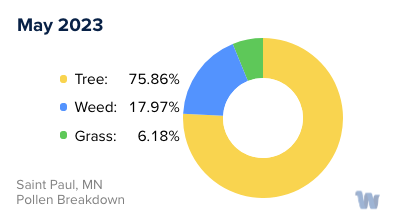
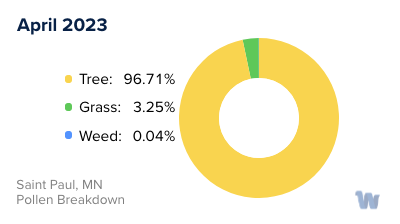
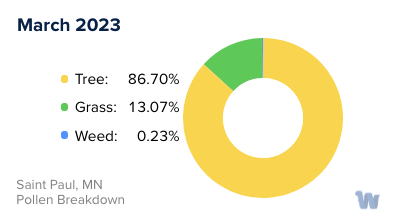


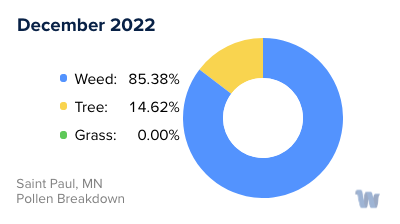
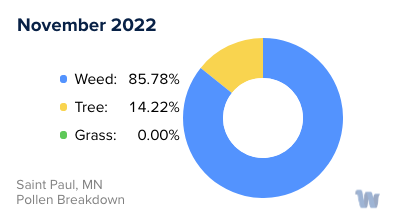
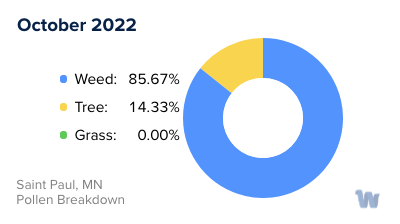
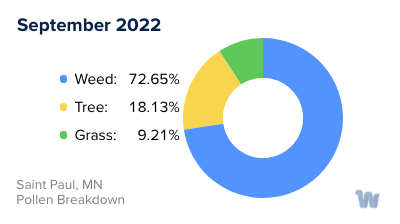
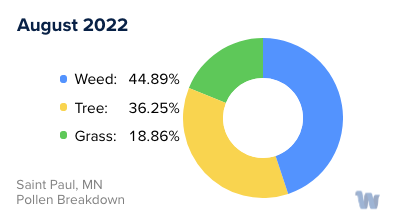


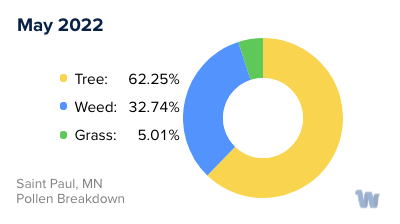
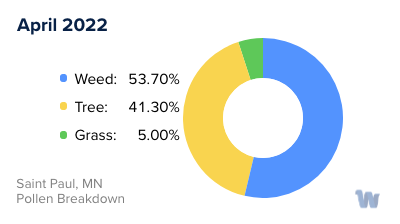
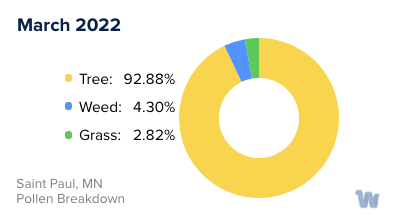
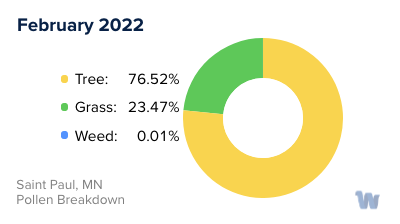
Pollen and Hay Fever in Saint Paul, MN
Living in the lush, green city of Saint Paul, Minnesota, can be a delight, but it can also present certain challenges, especially for those prone to pollen allergies, also known as hay fever. A considerable portion of the population is affected by this condition, and understanding the types of pollen and seasons can help one stay prepared.
The year in Saint Paul unfolds like a tapestry of pollen, each season bringing its unique blend. Spring is often the toughest time for those with allergies, as the city is teeming with tree pollen. Our lovely oak, cedar, and maple trees, which add so much beauty to our city, are the primary culprits during this season. Their pollen is small, light, and easily carried on the wind, making its way into our homes and respiratory systems.
As we move into the warmer months of summer, the trees quiet down, but the grasses take over. The ordinarily benign and picturesque fields of Timothy grass, Kentucky bluegrass, and ryegrass become the source of discomfort for many Saint Paul residents. These grasses release their pollen into the air, causing an array of allergic reactions ranging from sneezing and watery eyes to respiratory distress in severe cases.
Once the heat of summer fades, and we welcome the fall, ragweed steps into the spotlight. This prolific plant, often regarded as a weed, is a potent allergen. Each ragweed plant can produce up to a billion grains of pollen per season, affecting individuals well into the autumn months.
In Saint Paul, even the winter months aren't entirely pollen-free. Indoor allergens like mold spores can trigger symptoms similar to pollen allergies, making it seem like hay fever is a year-round issue.
In conclusion, while Saint Paul is a city of beautiful landscapes, it's also a hotbed of various types of pollen throughout the year. Understanding the pollen cycle can help individuals anticipate and prepare for each season's allergenic challenges, even if it doesn't completely eliminate the discomfort.

